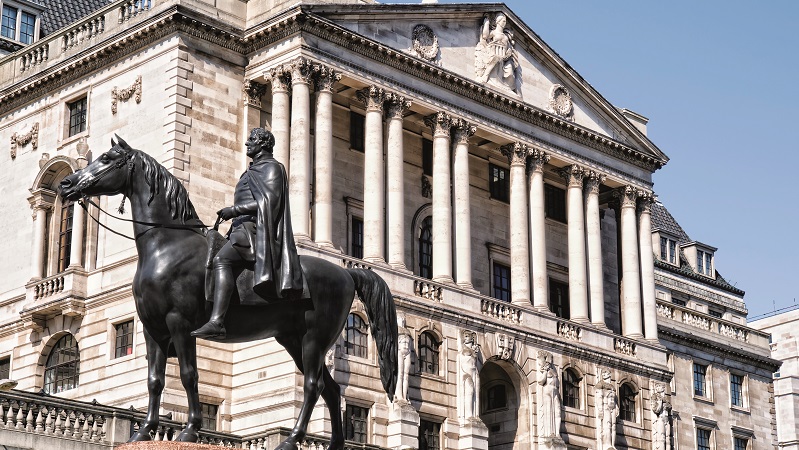A recent blog from Willem Verhagen, senior economist at NN IP, suggests that one of the most important roles of central banks is to guide rate expectations. He says the Fed has performed this role well recently by setting out its intentions very clearly.
In contrast, the Bank of England’s confusing communications have caused significant market volatility.
In October, BoE governor Andrew Bailey gave a clear signal that the bank was concerned that inflation expectations were going to break out on the upside, stating that it “will have to act” to curb inflationary pressures. As such, the BoE seemed to be preparing the market for a ‘bad’ hawkish pivot – policy tightening driven by the need to put the inflation genie back in the bottle.
But perhaps a surprise to many, rates remained on hold in November, the BoE justifying its stance by stating it believed inflation was the result of temporary supply shocks; that inflation expectations remained well anchored for now; and that the monetary policy committee wanted to gather more information about how the labour market would evolve.
Bank of England is no longer able to steer market expectations
Verhagen argues that, essentially, the Bank of England is no longer able to steer market expectations as it has created a lot of uncertainty about how it will use its policy instruments
He elaborates: “The Fed has always been very clear in this respect: first it will end QE, and only then will rate hikes come into play. The Bank of England has indicated it could hike rates while still engaging in QE, which is a bit like putting your foot on the accelerator and the brake at the same time.”
He adds: “It has also potentially reduced the effectiveness of future QE because a substantial part of its effectiveness stems from the notion that rate hikes will not happen as long as QE is ongoing. The lesson for the Bank of England is a simple one: if you create uncertainty about how you intend to use your monetary instruments, don’t be surprised if the market finds pricing your future actions difficult.”
Jamie Niven, senior fund manager at Candriam, agrees that the Fed’s communication regarding ending QE prior to the first rate hike has given the market somewhat more clarity and a clearer path to a hiking cycle.
However, he suggests the BoE’s indication that they could hike rates before ending QE isn’t necessarily the reason why communications have been more confusing and he argues that doesn’t diminish the effectiveness of future QE.
“Remember the Fed are engaged in QE with a monthly purchase target while the Bank of England have a target in terms of total purchases. By not completing the communicated target (£895bn), especially so close to the end of the package, I would argue is more likely to reduce the effectiveness because the market may no longer see packages as a target and rather as an envelope.”
He adds: “I don’t necessarily believe that use of monetary instruments is the problem in this case and shouldn’t cause the market problems in pricing future actions. Rather I think certain members of the MPC made an error in essentially endorsing market pricing between the September and November meetings if, in fact, based on votes, they never intended to raise rates at said meeting. As such, going forward, the committee certainly need to improve in their verbal communications to alleviate concerns about their credibility.”
The end of forward guidance?
Richard Barwell, head of macro research & investment strategy team at BNP Paribas Asset Management, believes there are two sustainable modes of central bank communication. Either you say very little about the future and let the market figure it out for itself, which can lead to volatility in market prices, but there is no risk of misleading people. Or it’s full disclosure: you publish your preferred path for rates and try to anchor market prices on a sensible outcome.
“I am concerned that the BoE has chosen the unsustainable middle ground where the lack of clarity in the message leaves the bank simultaneously unable to anchor market rates and exposed to accusations of being unreliable.”
He adds: “Compare and contrast the US Federal Open Market Committee’s (FOMC) dot plot and QE as signals on the future path of rates. One is a precise statement that can be produced at near zero cost. The other is an imprecise statement that involves spending billions of dollars, euros or pounds on financial assets. It is becoming increasingly difficult to understand why central bankers who believe that QE primarily works as a signal have not chosen to stop buying bonds altogether and instead start publishing rate paths.”
Bastien Drut, chief thematic strategist at CPR Asset Management, identifies what he sees as the dilemmas central banks now face – especially in a changing environment.
He suggests we are currently witnessing the (potentially temporary) end of forward guidance. The previous decade was characterised by persistent ‘lowflation’ year after year, which prompted central banks to use ultra-accommodative monetary policies and communicate that these would be applied for an extended period of time (almost the definition of forward guidance).
“Against the new backdrop, central banks simply cannot guarantee that they will keep key rates low for as long as inflation is elevated and the uncertainty surrounding it remains very high. Consequently, the sequencing ‘end of QE then rate hikes’ is jeopardised.”
Drut adds that one new thing that central banks will have to deal with is their profit and loss. “Hiking rates would increase the costs of their liabilities (they pay interest on reserves) while the return of their assets would remain rather sticky.
“Should concerns around elevated rates persist even longer than expected, we might see central banks talking about shrinking their balance sheets. It is therefore interesting to see that James Bullard, the Saint Louis Fed president, has declared that the Fed might have to shrink its balance sheet not long after the end of the tapering.”
For more insight on continental European investment, please click on www.expertinvestoreurope.com









